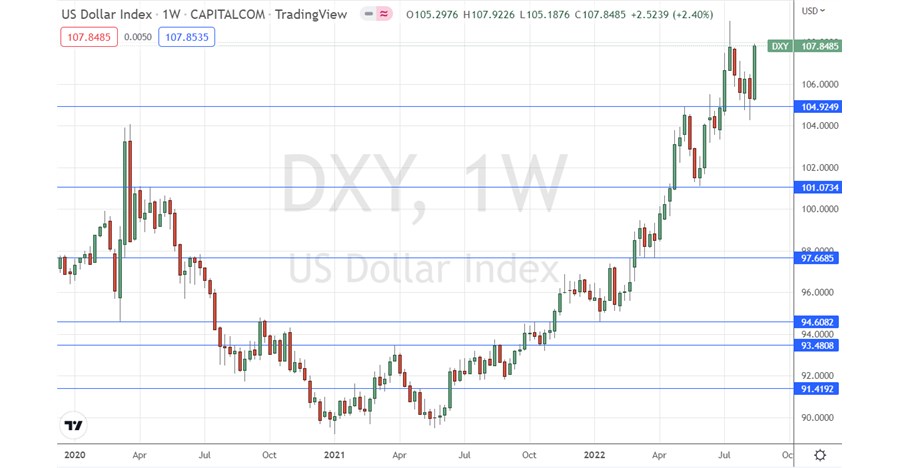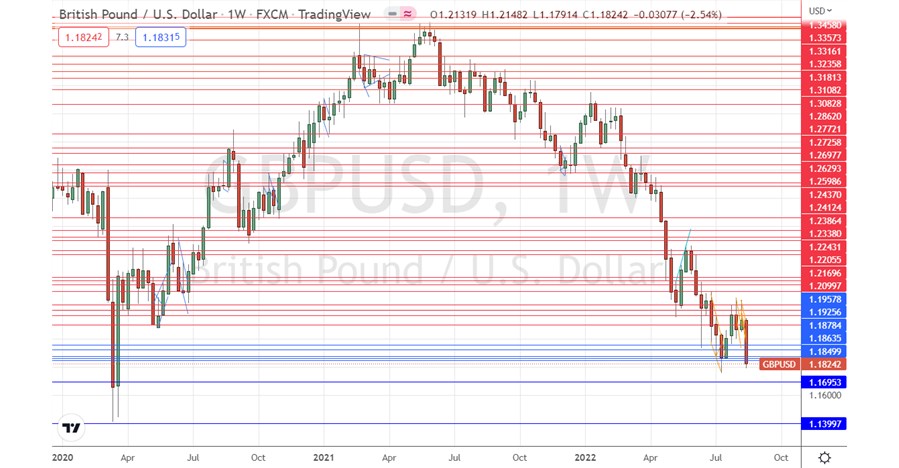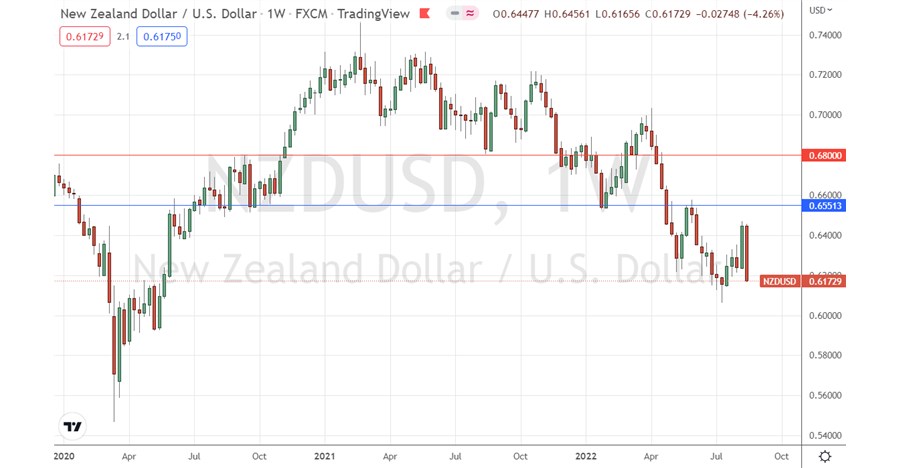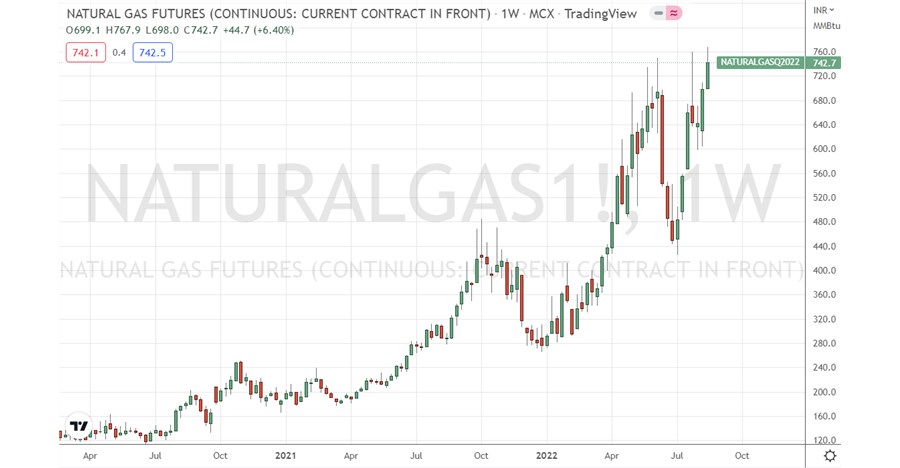Pairs In Focus This Week – GBP/USD, NZD/USD, Natural Gas - Sunday, Aug. 21
Image Source: Unsplash
The difference between success and failure in Forex trading is likely to depend mostly upon which assets you choose to trade each week and in which direction, and not on the exact methods you might use to determine trade entries and exits.
So, when starting the week, it is a good idea to look at the big picture of what is developing in the market as a whole, and how such developments are affected by macro fundamentals, technical factors, and market sentiment.
Fundamental Analysis & Market Sentiment
In last week's piece, it was detailed that the best trades for the week were likely to be:
- Looking for short-term long trades in the S&P 500 index during periods of short-term bullish momentum. However, we did not really see any bullish momentum here last week.
The news is currently dominated by the FOMC meeting minutes which were released last week, showing that the Fed remains determined to continue hiking rates until inflation is brought considerably lower, and that Fed members are worried about the economic impact of the ongoing rate hikes.
Recent inflation data released in the US and Canada showed inflation slowing, but inflation in the UK was revealed last week to be still increasing, now standing at an annualized rate of 10.3%.
The shift in sentiment towards a risk-off approach has had the effect of knocking down stocks, commodities, and cryptocurrencies, and strongly boosting the US dollar, mostly at the expense of the commodity currencies like the New Zealand dollar, the Australian dollar, and the Canadian dollar.
It is worth pointing out that, although the US stock market has been rising in recent weeks, the US stock market has technically been in a bear market for some time, with the US yield curve being inverted for several weeks now. The US is also arguably in a recession, having seen two successive quarters of GDP contraction, although wage growth and the job market remain relatively buoyant.
To recap, there were a few other important economic data releases last week apart from the FOMC meeting minutes. The results were as follows:
- UK CPI Data – an annualized rate of inflation of 10.3% was reported compared to the rate of 9.8% that had been expected.
- Canadian CPI Data – a month-over-month increase of only 0.1% was reported, which had been expected.
- Reserve Bank of New Zealand Official Cash Rate, Rate Statement, and Monetary Policy Statement – the RBNZ hiked its rate of interest by 0.50% to 3.00%, the highest rate of any major currency, and signaled a more hawkish tightening path over the coming months.
- Australian Monetary Policy Meeting Minutes – the RBA signaled an intent to take further tightening steps, but did not define the path clearly.
- US Retail Sales Data – the core data came in more strongly than had been expected, showing a month-over-month increase of 0.4% when a decrease by 0.1% had been widely forecast.
- Australian Unemployment Data – there was a net loss of approximately 40 thousand new jobs when a gain had been expected, but the headline unemployment rate fell to 3.4%.
The Forex market saw a strong rise by the US dollar last week. The rise was broad but especially strong against the commodity currencies, especially the New Zealand dollar.
Rates of coronavirus infection globally dropped last week for the fifth consecutive week. The most significant growths in new confirmed coronavirus cases overall right now are happening in South Korea, Moldova, the Marshall Islands, and Tonga.
The Week Ahead: Aug. 22-26, 2022
The coming week in the markets is likely to show a lower level of volatility compared to last week, although there will be a release of preliminary GDP data for the US that could move the market despite the small amount of important data releases due. Releases due are in order of likely importance:
- US Preliminary GDP data.
- US Core PCI Price Index data.
- US, UK, German, and French Flash PMI data.
- Jackson Hole Symposium (central bankers).
Technical Analysis - US Dollar Index
The weekly price chart below shows the US Dollar Index printed a long, strongly bullish candlestick which closed right on its high, in line with the bullish long-term trend. The weekly closing price is a 20-year high, and the week’s strong rise came after the price rejected the support level below just under 105.00. These are very strong bullish signs.
It may be a good idea to look for long trades in the US dollar over the coming week. This is a very powerful, bullish long-term trend in the most important currency in the Forex market, and it remains likely to continue as long as sentiment remains driven by the fear of ongoing interest rate hikes negatively impacting risky assets, with the US dollar acting as a primary safe haven.

GBP/USD
Last week saw the GBP/USD currency pair print a large, bearish engulfing candlestick. The British pound was not one of the biggest losers against the strong US dollar over the week, but this pair is technically interesting as it printed the lowest weekly close seen since the coronavirus panic in March 2020.
The price briefly traded below $1.1800 on Friday before closing a little higher than that. The British pound has been beset by fundamental woes, including new increased inflation figures above 10%, and a Bank of England forecast of a coming recession that will last for five quarters and see GDP shrink by 2.2%.
The strength of the US dollar, the technical breakdown seen here, and fundamental headwinds against the pound may combine to see a short trend trade opportunity in this currency pair. However, it is important to use relatively tight stop losses for the British pound, as using ATR 1 has produced much better results than the more typical ATR 3 over the years.

NZD/USD
The New Zealand dollar was the biggest loser of all major currencies last week, despite the RBNZ’s rate hike by 0.50% to 3.00%, the highest rate of any major currency. However, there was no technical breakdown below recent support. It is notable that the price closed right on the low of the week, which is a bearish sign.
There may be further bearish momentum in the NZD/USD currency pair over the coming week, with all the commodity currencies weak and the New Zealand dollar weakest of all, showing this can be an interesting currency on the short side.

Natural Gas
Although we are seeing a bearish market with most commodities and risky assets shrinking against safe havens such as the US dollar, we have seen natural gas gain strongly over the past week to make new multi-year highs. Volatility is very high and price movement can be extremely choppy.
Long natural gas may be an attractive trend trade, as we are seeing a breakout in the price chart. However, anyone trading natural gas should be very, very mindful of the extremely high level of volatility seen here over recent months, and trade very small position sizes which respect the volatility.
As commodities in general and energies are quite weak, there's not much faith in a long trade here, which is another reason to keep the position size very small if you are trading natural gas over the coming week.

Bottom Line
The best opportunities in the financial markets this week appear likely to be:
- Short of the GBP/USD currency pair.
- Long of natural gas.
More By This Author:
EUR/USD Forex Signal: Euro Is Set To Hit Parity This Week
Risk Sentiment Sours On FOMC Minutes; Natural Gas Hits Record High; UK Inflation Exceeds 10%
EUR/USD Technical Analysis: Anticipating Important Events
Disclosure: DailyForex will not be held liable for any loss or damage resulting from reliance on the information contained within this website including market news, analysis, trading signals ...
more



